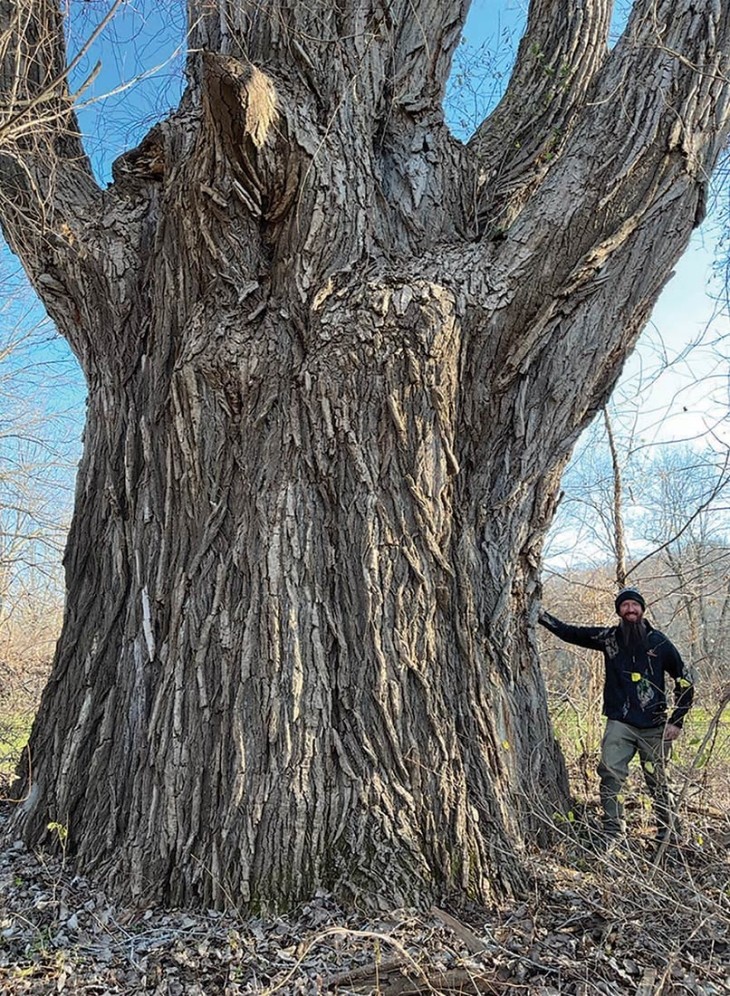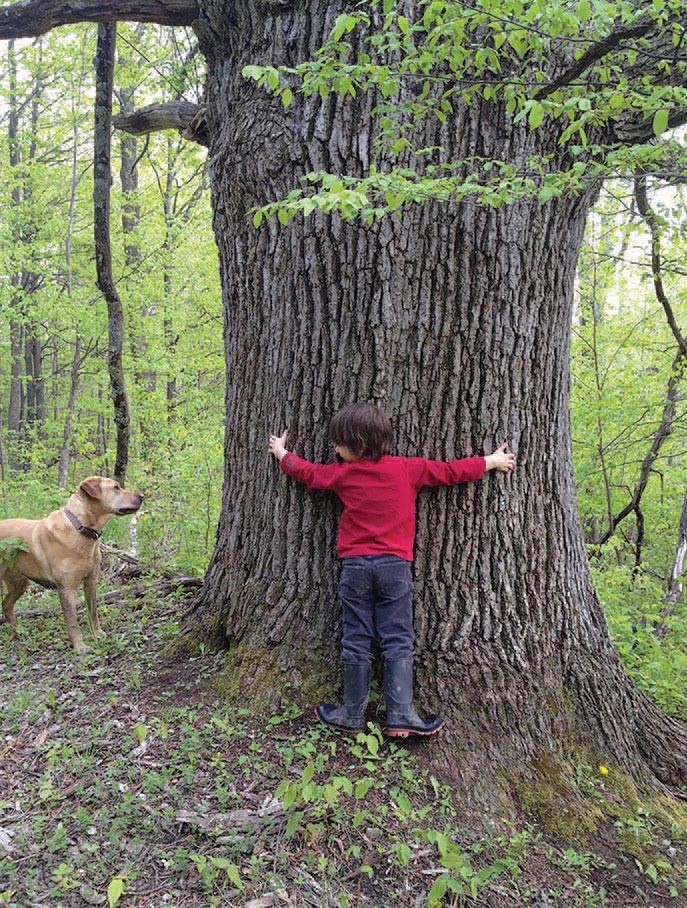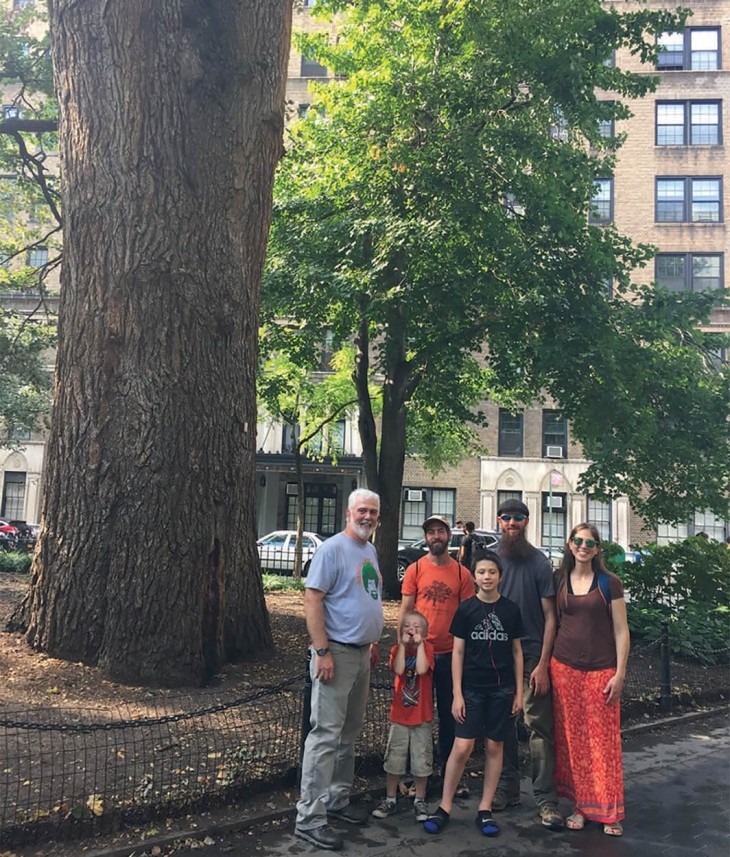How Big Trees Help Promote Environmental Awareness

Arborist Fred Breglia has a lifelong fascination with big trees. As a child, he often heard his mother speak about a great oak tree near their home in the Catskill Mountains. When he was old enough to make the hike to the tree, he wasn’t disappointed; it was even bigger than he’d imagined. Since that first encounter, Breglia has taken friends and family to visit the oak. Watching other people’s reaction during each visit, he realized that big trees could serve as environmental diplomats. “Show someone a big tree and you have the opportunity to discuss how special such trees are, but you also have an opening to address the importance of environmental health,” he said.
His interest in big trees has carried over in his 25-year career as director of Landis Arboretum, a private, not-for-profit organization that encompasses hundreds of acres in Schoharie and Montgomery counties in New York State, including some old-growth forest. Breglia has found a number of large trees, including the state champion swamp white oak. These trees, he said, serve as ambassadors for forest stewardship and “document the past for the future.” They help people imagine the forest that was prevalent before the past few centuries of clearing and cutting in the Northeast, where big trees were common components of forest communities.
In December 2022, Breglia finally tracked down the location of a tree that he had heard rumors about for some time and was keen to evaluate as a potential champion tree – a massive eastern cottonwood near the Hudson River in Schaghticoke, New York. After taking the measurements required by the American Forests’ National Registry of Champion Trees, Breglia knew this tree was a contender for champion status. Its measurements include a trunk circumference of 405 inches at 4½ feet above ground level, a tree height of 108 feet, and one-quarter of the average canopy spread (26 feet) which add up to a big tree score of 539 points. For comparison, in New Hampshire, the biggest cottonwood scores a mere 401 points.
When Breglia submitted the Schaghticoke tree’s measurements to New York’s Department of Environmental Conservation, he discovered the tree not only qualifies as the champion cottonwood for the state, but it’s also the largest tree of any species in the state. Big tree fans were abuzz after that designation, and numerous newspapers published mentions of the find, including the Times Union, New York Almanack, and New York Times. Breglia suspects the Schaghticoke tree may be the national champion for eastern cottonwoods. He’s planning to travel to Kansas and Nebraska to check the measurements of two other cottonwoods that are contenders for the national title and are currently listed on the American Forests website as having slightly higher scores than that of the Schaghticoke tree. Big trees are vulnerable to wind, ice storms, and lightning strikes that can affect height and canopy measurements. So, today’s champion will not reign forever.
Cottonwoods are dioecious (meaning that a tree has either female or male reproductive systems) and they got their name from the catkins produced by female trees. These mature in late spring to early summer and open to release an abundance of small seeds attached to cotton-like strands. As with other members of the poplar genus, cottonwoods are fast growing and short lived; they add as much as 6 feet in height a year and rarely survive more than a century. Breglia suspects the Schaghticoke tree is a true ancient, close to 300 years old. This tree’s longevity and astonishing size are likely attributable to its location. It stands on the bank of a small creek, where fertile soil and an ample supply of water provide optimal growing conditions. It has also likely benefited from its spot near the border of three different properties, which over the years, may have deterred landowners from cutting it, as it has probably served as a boundary marker.
Breglia has located several other New York champion trees, and he finds himself scanning trees whenever he travels. However, in recent years, he has been more interested in using big trees as a way to excite people about the natural world. Breglia uses social media to share his experiences with a large audience. He founded two Facebook groups: Big Tree Seekers and Ancient Forests, with combined memberships exceeding 1 million worldwide. Additionally, his Facebook page Ancient Forests & Champion Trees has more than 330,000 followers, and an Instagram account @bigtreehunters has nearly 150,000 followers. According to Breglia, followers post about big and interesting trees almost every day.
Currently, Breglia and the Landis Arboretum are hosting a New York Big Tree Search, a contest that they have held annually for more than a decade. From now until November 1, participants are encouraged to find the biggest individual of any tree species in the state. Breglia recommends “people seek out species that aren’t known to grow to an extreme size. A sassafras or sweet crab apple can’t grow as big as a red oak or white pine, but it can still be a species champion.”
Visit Landis Arboretum’s website for details about the search and how to submit New York entries. Several other states hold similar contests.



